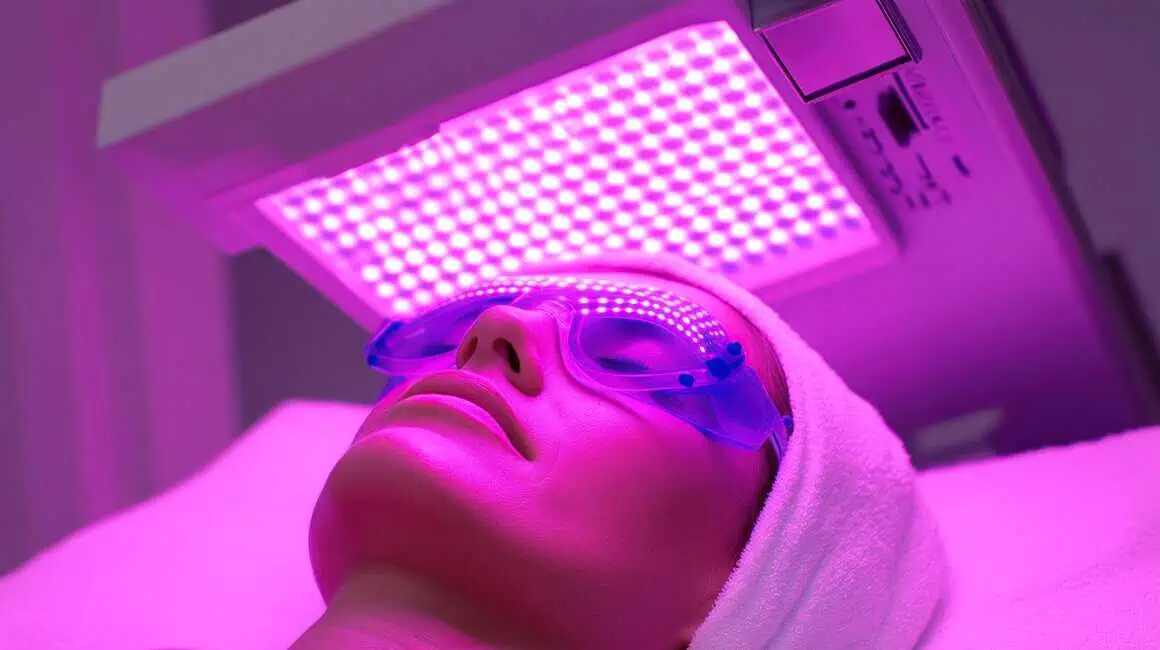Smooth and silky skin is a timeless aspiration for both men and women. The allure of a flawless complexion, free from unwanted hair, has been sought after for centuries. Whether for aesthetic reasons, hygiene, or personal preference, the quest for velvety skin remains a common desire.
This ultimate guide serves as your go-to resource for effective hair removal techniques. By comprehending the significance of smooth and silky skin and the role of different methods in achieving this goal, you will be empowered to make informed decisions tailored to your unique needs. So, embark on this journey with us as we unravel the secrets to achieving the velvety skin you’ve always desired.
Factors affecting hair growth
Several factors influence hair growth and can impact the effectiveness of hair removal techniques. Some key factors to consider include:
- Hormonal Influences: Hormonal changes, such as during puberty, pregnancy, or menopause, can significantly affect hair growth patterns. Hormonal imbalances or conditions like polycystic ovary syndrome (PCOS) may lead to excessive or unwanted hair growth in certain areas.
- Genetics: Genetic factors determine hair thickness, density, and growth patterns. Individuals with a family history of dense or coarse hair are likelier to experience similar hair growth characteristics.
- Age: Hair growth tends to slow down as we age. The anagen phase becomes shorter, reducing hair production and potential thinning.
- Health Conditions: Certain medical conditions and medications can impact hair growth. For instance, alopecia or thyroid disorders can cause hair loss or hinder hair regrowth.
Different types of hair (delicate, coarse, dark, light)
Hair can vary in texture, thickness, and color, influencing hair removal techniques. Understanding the characteristics of different hair types is essential for selecting the most effective method:
- Fine Hair: Fine hair is typically thinner and more delicate. It may be less visible and require less aggressive hair removal techniques. Methods like shaving or depilatory creams may suit individuals with fine hair.
- Coarse Hair: Coarse hair is thicker and often more resistant to removal techniques. It can be more noticeable and require more robust methods such as waxing, epilation, or laser hair removal to achieve desired results.
- Dark Hair: Dark hair contains more melanin, which can absorb light and heat. This characteristic makes dark hair more responsive to laser hair removal or intense pulsed light (IPL) treatments.
- Light Hair: Light-colored hair, such as blonde or red hair, may be more challenging to target with laser or IPL techniques due to the lower melanin content. Other methods like waxing or sugaring may better suit individuals with light hair.
- Temporary Hair Removal Techniques
- Shaving
- Pros:
- Quick and easy: Shaving can be done at home and doesn’t require professional assistance.
- Pain-free: Shaving is generally painless when done correctly.
- Suitable for large areas: Shaving is efficient for larger body areas such as legs, arms, and underarms.
8. Cons:
- Quick results: Shaving only removes hair at the skin’s surface, so regrowth occurs relatively quickly.
- Potential irritation: Improper technique or dull blades can lead to skin irritation, razor burn, or ingrown hair.
9. Tips for a close and smooth shave:
- Before shaving, exfoliate the skin to remove dead skin cells and avoid ingrown hairs.
- Use a sharp, clean razor to ensure a close shave and minimize skin irritation.
- Apply a shaving gel or cream to provide lubrication and protect the skin.
- Shave along the direction of hair development to lessen the chance of irritation.
- Moisturize the skin after shaving to keep it hydrated and smooth.
- Waxing
- Types of waxing (hot wax, cold wax, sugaring): Waxing involves applying a sticky substance to the skin and removing it from the hair. Different types of waxing include:
- Hot wax: This method uses heated wax that adheres to the hair and is pulled off with a cloth strip.
- Cold wax: Cold wax strips are pre-coated and applied directly to the skin, adhering to the hair upon removal.
- Sugaring: Using a sticky paste consisting of sugar, water, and lemon juice, sugaring is a natural alternative to waxing.
2. Benefits:
- Longer-lasting results: Waxing removes hair from the root, resulting in slower regrowth than shaving.
- Finer regrowth: With regular waxing, hair often grows back finer and sparser.
- Suitable for various body areas: Waxing can be performed on large or small areas, including the face, legs, bikini area, and more.
3. Considerations:
- Discomfort: Waxing can be uncomfortable, especially for sensitive skin, as the hair is pulled from the root.
- Ingrown hairs: Improper waxing techniques or failure to exfoliate can increase the risk of ingrown hairs.
- Not suitable for specific conditions: Individuals with sunburn, skin irritations, or certain skin conditions may need to avoid waxing.
4. A step-by-step process for effective waxing:
- Cleanse and dry the skin before waxing.
- Heat the wax according to the product instructions (if using hot wax).
- Apply the wax toward hair growth and firmly press a cloth strip or wax strip onto the wax.
- Hold the skin taut and swiftly pull the strip against the direction of hair growth.
- Repeat the process for desired areas, ensuring to remove all unwanted hair.
- Afterward, apply a soothing lotion or oil to calm the skin and minimize potential irritation.
- Depilatory Creams
- How they work: Depilatory creams, also known as the chemicals in hair removal creams, cause the hair’s protein structure to unravel, causing the hair to dissolve at the skin’s surface.
- Suitable areas for depilatory creams: Depilatory creams are typically suitable for use on larger body areas, including legs, arms, underarms, and the bikini area.
- Precautions and best practices: While depilatory creams can be effective, it’s essential to follow precautions and best practices:
- Read and follow the instructions carefully, including the recommended application time.
- Avoid leaving the cream on the skin longer than instructed to prevent irritation or chemical burns.
- Rinse the skin thoroughly after removing the cream to ensure complete removal.
- Moisturize the skin afterward to soothe and hydrate it.
Semi-Permanent Hair Removal Techniques
Epilators
Epilation involves using an electronic device called an epilator, which mechanically removes hair from the root. The epilator’s rotating tweezers grasp and pull out multiple hairs simultaneously, resulting in longer-lasting hair-free skin.
Choosing the right epilator:
- Corded or cordless: Decide whether you prefer a cordless epilator’s flexibility or a corded one’s continuous power supply.
- Speed settings: Look for an epilator with adjustable speed settings to cater to different areas of the body and hair thickness.
- Additional features: Some epilators include attachments like massaging heads or shaving attachments for versatility.
Tips for efficient and less painful epilation:
- Exfoliate the skin before epilation to remove dead skin cells and minimize the risk of ingrown hairs.
- Hold the epilator at a 90-degree angle to the skin for optimal hair removal.
- Pull the skin taut while epilating to minimize discomfort.
- Begin with slower speed settings and gradually increase as you become accustomed to the sensation.
Threading
It involves using a twisted thread to trap and remove hair at the follicle level. The thread is skillfully maneuvered across the skin to pluck out individual or multiple hairs simultaneously.
Advantages and limitations:
Advantages:
- Precise: Threading allows for precise hair removal, making it ideal for shaping eyebrows or removing facial hair.
- Chemical-free: Those with sensitive skin or allergies can safely remove unwanted hair through threading.
- Suitable for all hair types: Threading can effectively remove fine or coarse hair.
Limitations:
- Time-consuming: Threading can be a time-consuming process, especially for larger areas of the body.
- Technique-dependent: It requires skill and practice to perform threading correctly, making professional assistance beneficial.
Sugaring
Sugar, water, and lemon juice are used in the natural hair removal method known as sugaring. The paste is applied to the skin, removing the hair with it.
Preparation and application process:
- Prepare the skin by cleaning and drying it thoroughly.
- Warm the sugar paste to a comfortable temperature.
- Firmly press a cloth strip onto the paste and quickly pull it off, removing the hair.
Benefits and aftercare tips::
- Natural ingredients: The sugar paste is made from simple, natural ingredients, making it suitable for sensitive skin.
- Less irritation: Sugaring tends to cause less skin irritation compared to waxing.
- Exfoliation: The paste’s gentle exfoliation helps remove dead skin cells, leaving the skin smooth.
Permanent Hair Removal Techniques
Laser Hair Removal
Laser hair removal targets and kills hair follicles using focused light beams. People with dark hair and light complexion benefit most from laser hair removal because the contrast makes targeting hair follicles easier. People with lighter hair colors may still benefit from laser treatments, but multiple sessions might be required. Safety considerations include:
- Protecting the eyes with specialized goggles during the procedure.
- Avoiding sun exposure and tanning before and after treatments.
- Informing the practitioner about medications or medical conditions that could affect the treatment.
Several sessions required and expected results:
The number of sessions depends on hair thickness, growth cycle, and the targeted area. Significant hair reduction can be expected, but complete hair removal may not be guaranteed. Maintenance sessions may be necessary to address any regrowth over time.
Electrolysis
The only FDA-approved permanent hair removal method: Electrolysis is the only FDA-approved method for permanent hair removal. It involves the use of an exemplary probe inserted into individual hair follicles. Electrical currents are then applied to destroy the follicle and prevent future hair growth.
Understanding the process:
- A trained electrologist inserts a tiny probe into each hair follicle.
- Electrical current is delivered through the probe, destroying the follicle’s growth center.
- The treated hair is then gently removed with tweezers.
- This process is repeated for each targeted hair follicle until the desired area is treated.
Pros and cons of electrolysis:
Pros:
- Permanent results: Electrolysis provides permanent hair removal by targeting each hair follicle.
- Versatility: Electrolysis can be used on any hair color or skin type.
- Precision: Electrolysis allows for precise hair removal, making it suitable for smaller, delicate areas like the eyebrows.
Cons:
- Time-consuming: Electrolysis can be a time-consuming process, especially for larger areas.
- Potential discomfort: Some individuals may experience discomfort or pain during the procedure, although topical numbing creams can help alleviate it.
- Multiple sessions: Electrolysis requires multiple sessions to treat all hair follicles adequately.
Tips for Choosing the Right Hair Removal Technique
Considering hair type and color:
Different hair removal methods work better for specific hair types and colors. For example:
- Shaving and depilatory creams are generally effective for fine to medium hair.
- Waxing and epilation techniques are suitable for coarser hair.
- Laser hair removal or electrolysis tends to be more effective for darker hair colors.
Skin sensitivity and tolerance:
Take into account your skin’s sensitivity and tolerance to different hair removal methods:
- If you have sensitive skin, consider techniques like shaving, depilatory creams, or sugaring, which are generally gentler.
- For individuals with higher pain tolerance, options such as waxing or epilation may be more suitable.
Budget and time considerations:
Different hair removal techniques vary in cost and time commitment. Consider the following:
- Shaving and depilatory creams are typically more budget-friendly and time-efficient.
- Laser hair removal and electrolysis may require a higher upfront investment but can offer long-term cost savings by reducing the need for frequent treatments or product purchases.
Desired duration of hair removal:
Determine how long you want to remain hair-free to guide your choice of technique:
- Temporary methods like shaving or depilatory creams provide shorter-term results.
- Semi-permanent methods like waxing, epilation, and sugaring offer longer-lasting hair removal.
- The most long-lasting results come from permanent procedures like laser hair removal.
Conclusion
When selecting a hair removal technique, it is crucial to consider factors such as hair type and color, skin sensitivity, budget, and desired duration of hair removal. You can achieve optimal results and minimize potential discomfort or adverse reactions by choosing the proper method for your needs.
We encourage you to experiment with different techniques and consult professionals for personalized advice. They can assess your unique circumstances and provide recommendations based on their expertise. Trying different methods allows you to discover what works best for you and ultimately achieve your desired smooth and silky skin.
Remember, hair removal is a personal journey, and what works for one person may not work for another. Be patient, be open to new approaches, and always prioritize your skin’s health and well-being.
Here’s to achieving the confidence and satisfaction that comes with smooth and silky skin through effective hair removal techniques.
Take the first step towards revealing your true beauty today. Visit Instinct Holistic Medical Spa and let our dedicated team pamper you with our holistic treatments to enhance your natural radiance. Experience the transformative power of our spa and emerge feeling renewed, revitalized, and confident.




